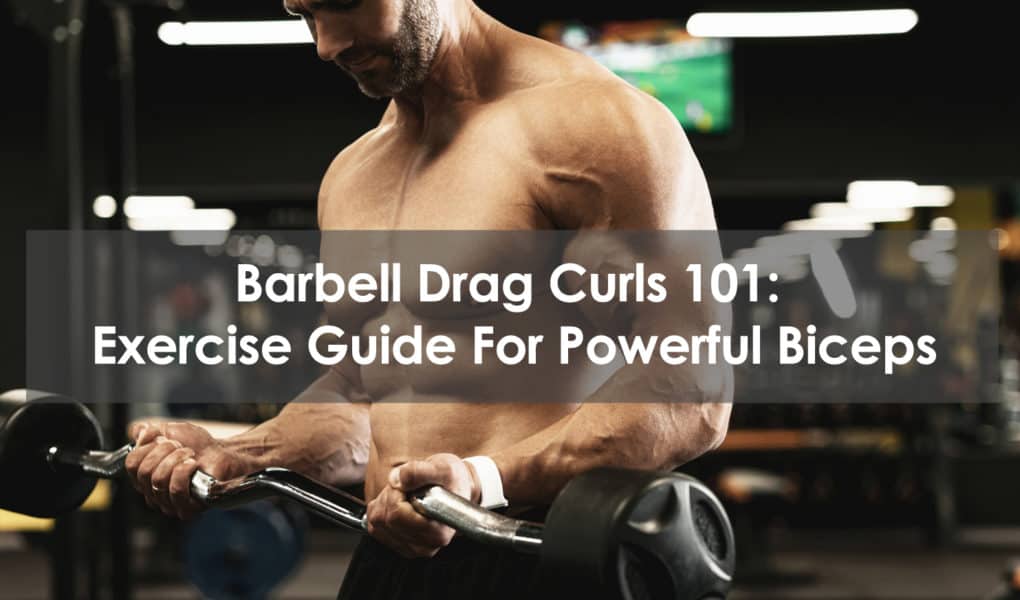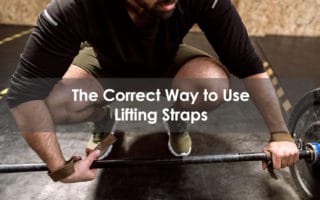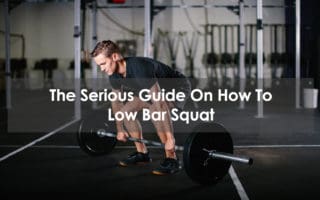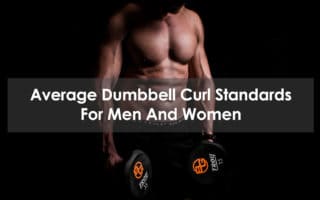Building bigger biceps usually means opting for a particular exercise in the gym; the bicep curl. It is the most widely-used biceps exercise and the basic standing curl is regarded as the daddy of all curl alternatives.
That’s not to say you should just stick with the regular curl, though. In fact, there’s one variation that few people are aware of, which provides an intense biceps exercise – the barbell drag curl.
If you’re unfamiliar with the exercise, we’re going to look at the benefits of drag curls, how to perform them correctly and what adjustments you can make to them.
Benefits of Drag Curls
1. It’s an excellent bicep workout
Like a standard curl, drag curls provide an excellent bicep workout. Your biceps are fully contracted and engaged at the top of the movement, with little assistance from other muscles, which can help you make major gains in this area.
2. It’s simple and easy to learn
What also makes this an effective bicep exercise is that it’s simple to learn and doesn’t require much equipment; just a barbell and some weight plates. For those reasons, it’s difficult to understand why this isn’t one of the more popular exercises among those looking to build and tone their arms.
3. It reduces the risk of injury
The barbell drag curl also holds another advantage over the standard bicep curl in that it doesn’t activate your front deltoids as much, thus reducing the risk of injury. Shoulder pain and joint pain can be fairly common when performing sets of biceps curls because your deltoids are working to keep things stable.
However, your shoulders don’t need to do that work during drag curls, making it a more comfortable move to perform without compromising on size gains.
Muscles Worked
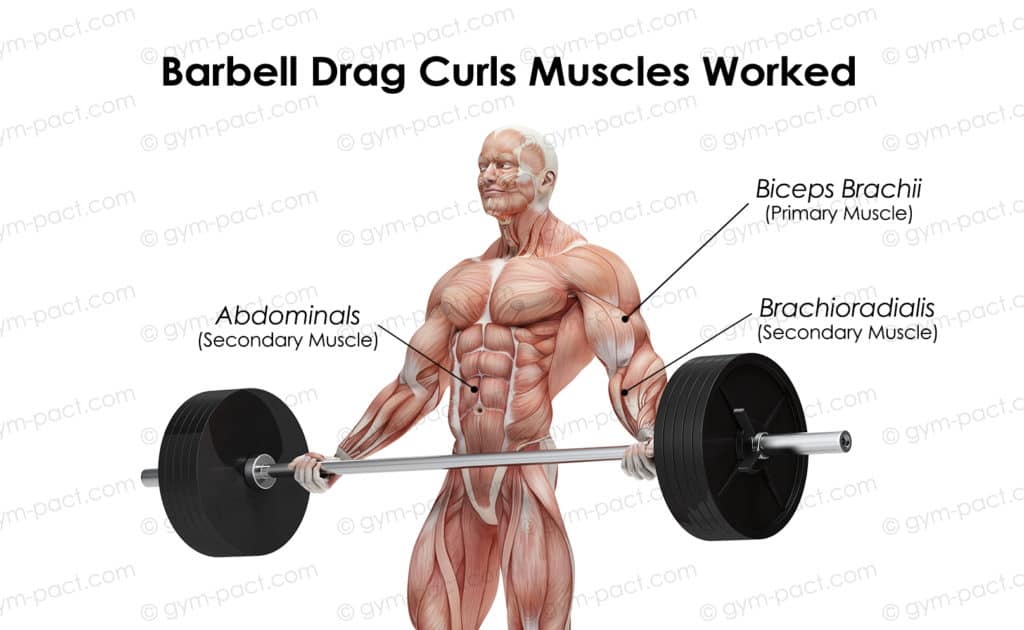
If it wasn’t already clear, the primary muscles targeted in drag curls are your biceps brachii. At the peak contraction position – the top of the movement – your biceps are working extra hard to keep the weight where it is, before lowering it back down under control.
Your brachioradialis, which is the most prominent muscle in your forearm, is also activated during this curl variation, though as a secondary mover. Likewise, your abdominals and some muscles in your upper back get involved to stabilize your body as you perform the drag curls.
How to Perform Drag Curls
- Bend at the knees and take hold of the barbell with an underhand (supinated) grip, then stand up and hold the barbell by your hips with your arms straight.
- Perform a dragging motion to lift the bar up to your chest. Bend and lift your elbows up and pull your shoulders back slightly.
- Squeeze your biceps at the top of the movement, then lower the bar back down to the starting position. Repeat for 12-15 reps.
Tips
- Keep the bar close to the front of your body throughout the entire movement, and ensure it remains in the same plane of motion.
- A barbell is the best option for drag curls, though you can also use a curl bar.
- When assuming the starting position, have your hands roughly in line with your shoulders.
- Start out using lighter weights if you’re not used to training your biceps. You can always move on to a heavier weight once you’re more comfortable with the exercise and have built up some more strength.
Related Post: 15 EZ Curl Bar Exercises You Have To Try
Mistakes to Avoid
- The exercise motion should be fluid and controlled – don’t jerk the weight up.
- Focusing on perfect form – or as close to that as you can get – is more important than the amount of weight you’re lifting. You may find that you can’t lift as heavy with drag curls compared to normal barbell curls or dumbbell curls, for example.
- Don’t bring your elbows forward when dragging the bar up – they should move up and backward.
- Your arms should be doing the work in this lift, so avoid using the momentum of your body to move the bar. Your upper body, apart from your arms and shoulders, should remain still, with your spine neutral.
Related Post: Barbell Curl vs Dumbbell Curl – Which One is Better For You?
Drag Curl Variations
There are plenty of curl variations to choose from. Dumbbell drag curls are an option, but they are slightly more difficult to perform as you will need to focus on moving the weights at the same pace and keeping your arms in the same position during the range of motion.
Hammer-grip drag curls are another possible variation, and can only be done with dumbbells. You hold a dumbbell in either hand, with your palms facing each other. Then, perform the drag curls in the same way, but with the weights at either side of your torso.
Alternatively, you can just perform regular hammer curls. Hold two dumbbells in the hammer position outlined above and curl them up to your chest, keeping your elbows tight against your torso and your back straight.
Frequently Asked Questions
Are drag curls good for mass?
As a resistance exercise, drag curls can help you gain mass, provided you are using the correct weight for you. That being said, due to its range of motion the drag curl won’t allow you to lift excessive weight as this can lead to injury, so there will naturally be a limit to the impact it can have on mass and size.
How heavy should curls be?
As with any resistance exercise, you need to use a weight that allows you to perform the reps safely and correctly but still challenges you. Ideally, you should be able to finish each set without a break, but feel the strain in your muscles during the last few reps.
If you can’t perform the reps with the correct form, then you need to use a lighter weight. If you’re breezing through the reps with safe form and you aren’t feeling much of a burn, use a slightly heavier weight.
Are drag curls worth doing?
For some, it might be worth just sticking with regular bicep curls, and that’s completely fine. However, drag curls can alleviate some of the pressure and strain on your deltoids, so if this is a problem area for you, then they are certainly worth doing.
